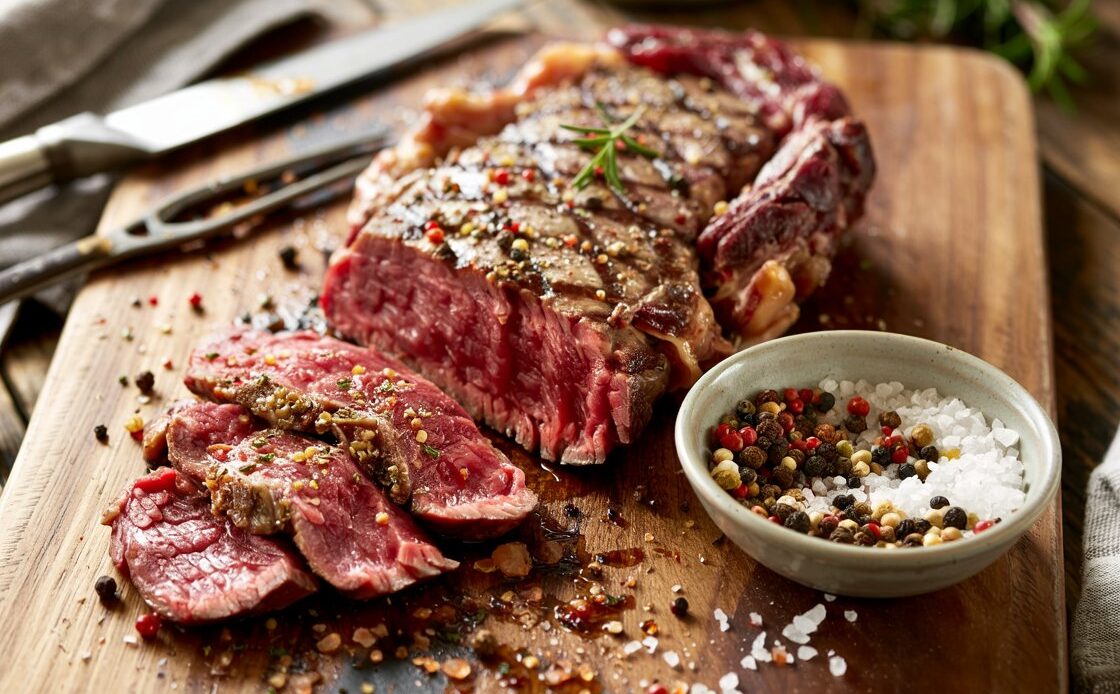
Homemade steak seasoning is the secret weapon behind a truly unforgettable steak. Whether you’re firing up the grill or searing in a cast iron skillet, the right blend of spices can transform an ordinary cut of meat into a flavor-packed masterpiece. Forget bland store-bought mixes—this guide will show you how to craft your own bold, customizable seasoning that brings out the best in every bite. Ready to upgrade your steak game? Let’s dive into the spice rack.
Why Homemade Steak Seasoning Beats Store-Bought Every Time

Making your own steak seasoning gives you more than just flavor. It gives you full control, better quality, and peace of mind. While store-bought blends may seem convenient, they often hide more than they reveal. Let’s look at why homemade always comes out on top.
The Problem with Pre-Made Blends
Most store-bought seasoning mixes contain preservatives and anti-caking agents. These don’t add flavor—they just extend shelf life. You’ll often find vague ingredient labels like “natural flavors” or “spices.” That’s not helpful when you care about what you’re eating. Another issue is sodium. Many commercial blends contain high levels of salt to mask weak spice quality. Finally, pre-made blends offer no flexibility. You’re stuck with whatever balance of flavors the brand decided was “best.”
Benefits of Making It Yourself
When you mix your own seasoning, you know exactly what goes in. No fillers, no chemicals—just pure flavor. You can adjust spice levels based on the steak cut. A ribeye may need bolder flavors, while filet prefers subtle seasoning. Homemade blends are also cheaper in the long run. You buy ingredients once and make many batches. And the best part? Fresh spices taste better. When you grind or mix them yourself, they burst with aroma and depth.
Here’s a quick comparison to make the difference clear:
| Feature | Homemade | Store-Bought |
|---|---|---|
| Additives | None | Often present |
| Customizable | Fully | Limited |
| Cost per use | Low | Medium to high |
| Shelf life | 6–12 months | Varies |
| Flavor intensity | Fresh & bold | Can be dull |
Homemade steak seasoning isn’t just better—it’s smarter. You control the taste, the quality, and the experience from the start.
Choosing the Right Ingredients for Maximum Flavor
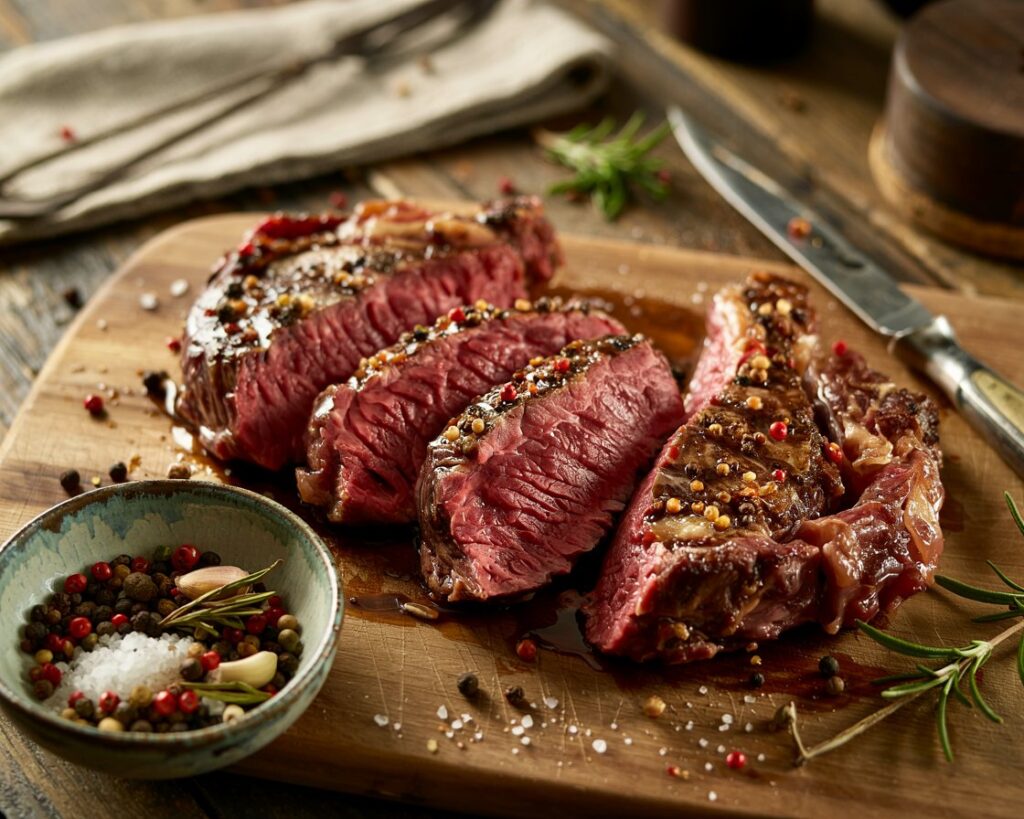
The key to an unforgettable homemade steak seasoning lies in the ingredients you choose. Each spice has a specific role, from bringing out the steak’s natural flavor to adding depth and complexity. Let’s break down the core elements of the perfect seasoning blend.
The Flavor Foundation: Salt & Pepper
When it comes to seasoning steak, kosher salt is a must-have. Its coarse texture helps the seasoning adhere better to the meat. It also dissolves evenly, providing consistent flavor with every bite. Table salt, on the other hand, is fine and can lead to over-salting if not measured carefully. Freshly ground black pepper is a game changer. The aroma and flavor of freshly cracked pepper are far superior to pre-ground varieties. The peppercorns release essential oils when ground, giving your steak a bold, zesty kick.
Building Depth: The Power of Paprika, Garlic, and Onion
Paprika adds more than just color—it enhances the overall flavor of your steak. The two main types of paprika to consider are smoked and sweet. Smoked paprika imparts a deep, earthy flavor that pairs beautifully with rich cuts like ribeye. It’s perfect for grilled steaks and adds that signature smoky, charred taste. On the other hand, sweet paprika is milder and works well with leaner cuts like sirloin, enhancing the natural meat flavor without overpowering it.
Garlic powder and onion powder are essential umami boosters. These spices elevate the savory qualities of your steak. Garlic adds a rich, aromatic depth, while onion powder offers a slightly sweet and savory balance. Together, they create the perfect base for any steak seasoning mix.
The Secret Weapons: Herbs & Heat
Herbs and heat bring complexity and character to your seasoning. Thyme, rosemary, and oregano are the classic herbs that enhance the flavor of steak. Thyme pairs beautifully with bold cuts, offering a fresh, earthy undertone. Rosemary is more aromatic and works particularly well with grilled steak, infusing it with a fragrant herbal note. Oregano adds a slightly bitter yet earthy edge, ideal for Mediterranean-style steak dishes.
Cayenne pepper, chili flakes, and mustard powder are your go-to for heat. Adding a small amount of cayenne or chili flakes can bring a welcome spice to your steak, especially if you like it hot. Mustard powder, often overlooked, adds a tangy bite and depth of flavor that can elevate your steak seasoning blend to a new level.
🔍 Pro Tip:
“Want that smoky steakhouse flavor? A pinch of smoked paprika and ground mustard can elevate your blend instantly.”
By selecting the right balance of these ingredients, you can customize your steak seasoning to fit any cut or cooking method. The key is to experiment and find what works best for you.
Tailoring Your Seasoning to the Cut of Steak
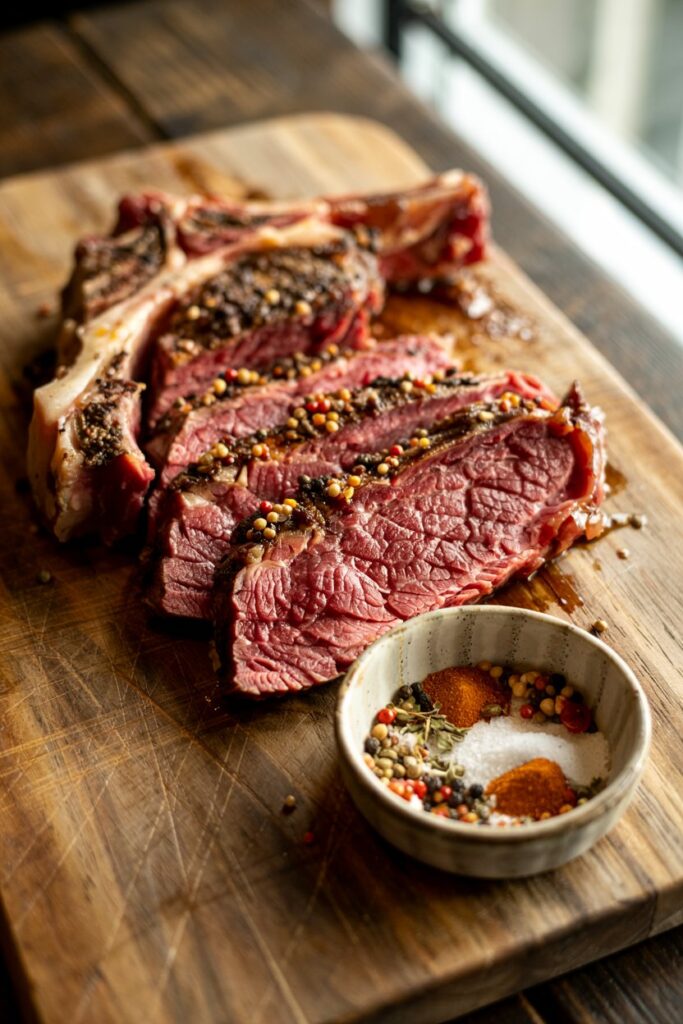
Every steak cut has its own unique flavor profile and texture. The best way to bring out the full potential of each is by adjusting your seasoning accordingly. The right blend can elevate your steak to new heights, whether you’re cooking a juicy ribeye or a delicate filet mignon.
Ribeye vs. Sirloin vs. Filet – What Each Cut Needs
Ribeye is a marbled cut, rich in fat, which gives it incredible flavor. Because of its natural fattiness, you can afford to use a bolder seasoning mix. Go for smoked paprika, garlic powder, and a pinch of cayenne to enhance the meat’s richness without overpowering it. The fat helps carry the spices through, making the steak bold and flavorful.
Sirloin, on the other hand, is leaner but still packed with beefy flavor. Since it doesn’t have the same fat content as ribeye, you’ll want a more herb-forward rub to complement its natural taste. Thyme, rosemary, and onion powder work well to boost the flavor without overwhelming it.
When it comes to filet mignon, the goal is to highlight its tender, mild flavor. This delicate cut doesn’t need an overpowering seasoning. A light touch of kosher salt, freshly cracked black pepper, and a hint of rosemary is all you need to enhance its natural flavor without masking it.
Steak Cooking Methods and Seasoning Strategy
The method you use to cook your steak affects how the seasoning reacts and how the flavors develop. Grilling often brings out a smoky, charred flavor, so bold, smoky seasoning blends work perfectly. The direct heat helps lock in the spices, making grilled steaks rich and flavorful. Pan-searing creates a beautiful crust, so seasoning with garlic powder, onion powder, and a little paprika is ideal for that crispy, flavorful exterior. Keep the seasoning simple to allow the crust to form without burning the spices. For sous-vide, which offers precise temperature control, you want to use a delicate seasoning. Since the steak is cooked in a vacuum-sealed bag, the flavors stay intact, so light seasoning is best. A subtle mix of herbs like thyme and salt is all you need to enhance the flavor without overwhelming the cut.
📊 Mini Table: Best seasoning styles for each steak cut
| Cut | Flavor Profile | Suggested Seasoning |
|---|---|---|
| Ribeye | Rich, fatty | Bold, smoky blend |
| Sirloin | Lean, beefy | Herb-forward rub |
| Filet | Tender, mild | Light seasoning, no overpowering spice |
By customizing your seasoning to match the cut of steak and cooking method, you can ensure each bite is packed with flavor, creating the ultimate steak experience.
Common Mistakes When Seasoning Steak (And How to Fix Them)
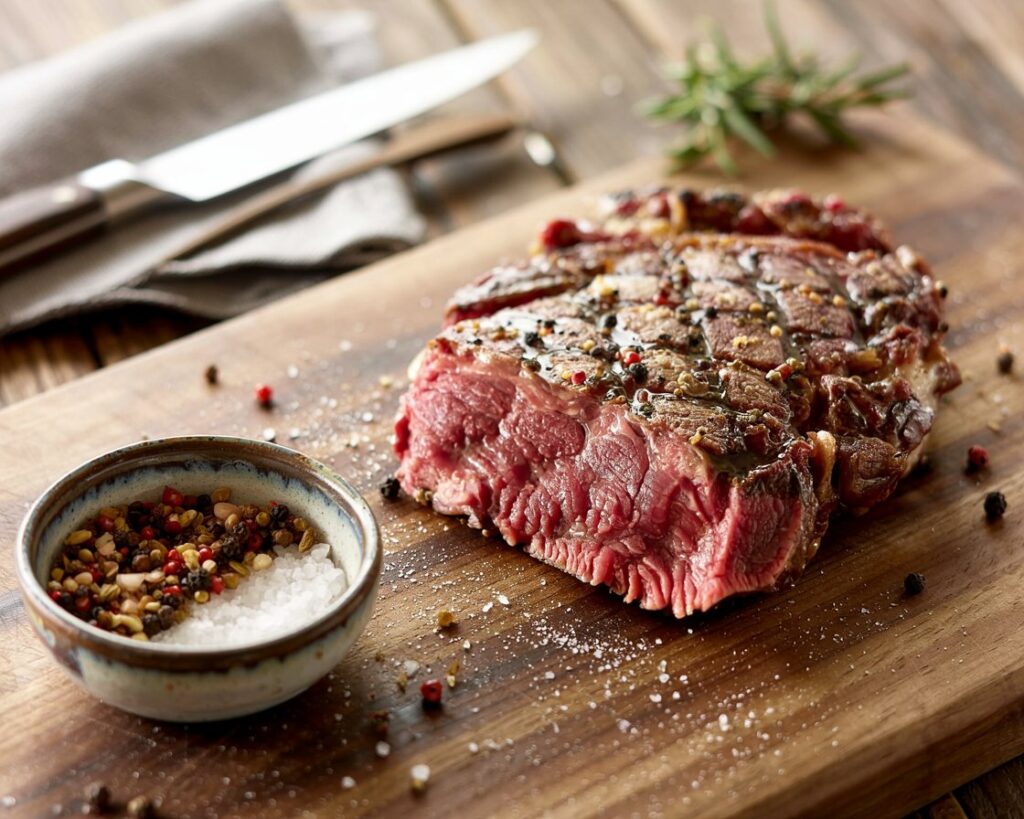
We’ve all been there—cooking a steak and feeling like something’s missing. Whether it’s too salty, too bland, or lacking that crispy crust, steak seasoning mistakes are more common than you’d think. Don’t worry, though—we’ve got you covered with some expert tips on how to fix them!
Overseasoning or Undersalting? Here’s How to Balance It
One of the most common mistakes is overseasoning or undersalting your steak. Too much salt can overwhelm the flavor, while not enough leaves the steak bland. The key is to find the perfect salt ratio. Start with a moderate amount of kosher salt—it’s less harsh than table salt and easier to control. A good rule of thumb is to salt generously but not excessively; you should be able to see a light coating of salt on the surface of the steak. Timing matters too. If you salt your steak too early, it may draw out moisture, leading to a dry texture. If you salt too late, the seasoning won’t have time to penetrate the meat, leaving you with unevenly seasoned bites. Ideally, season your steak 15-30 minutes before cooking to give it time to absorb the salt, which helps enhance its natural flavor.
The Myth of the Marinade vs. Dry Rub
The debate between marinades and dry rubs can be confusing. While both can add flavor, each has its place in the steak seasoning world. Marinades are perfect for tenderizing tougher cuts, like flank or skirt steak, while adding flavor. However, they can make steak a bit soggy if left too long, which isn’t ideal if you’re aiming for a crispy crust. On the other hand, dry rubs are the key to building that savory crust. Rubs create a flavor-packed exterior that enhances the steak’s texture during high-heat cooking methods, like grilling or pan-searing. If you want that perfect crispy crust, dry rubs win every time.
Not Letting the Seasoning Sit? Rookie Move.
Many home cooks make the mistake of not letting the seasoning sit on the steak long enough. You can’t rush flavor. After applying your rub or seasoning, let the steak rest for 15-30 minutes before cooking. This gives the seasoning time to soak into the meat and enhances the overall flavor profile. Letting the steak sit also brings it to room temperature, which promotes even cooking. So, don’t skip this step—it makes a huge difference.
💡 Quick Tip Sidebar: Let your steak sit at room temp for 30 minutes after seasoning for better flavor absorption and even cooking.
By avoiding these common mistakes and following a few simple tricks, your steak will come out perfectly seasoned every time. Say goodbye to bland or over-seasoned steaks and hello to flavorful perfection!
Creative Ways to Use Steak Seasoning Beyond Steak
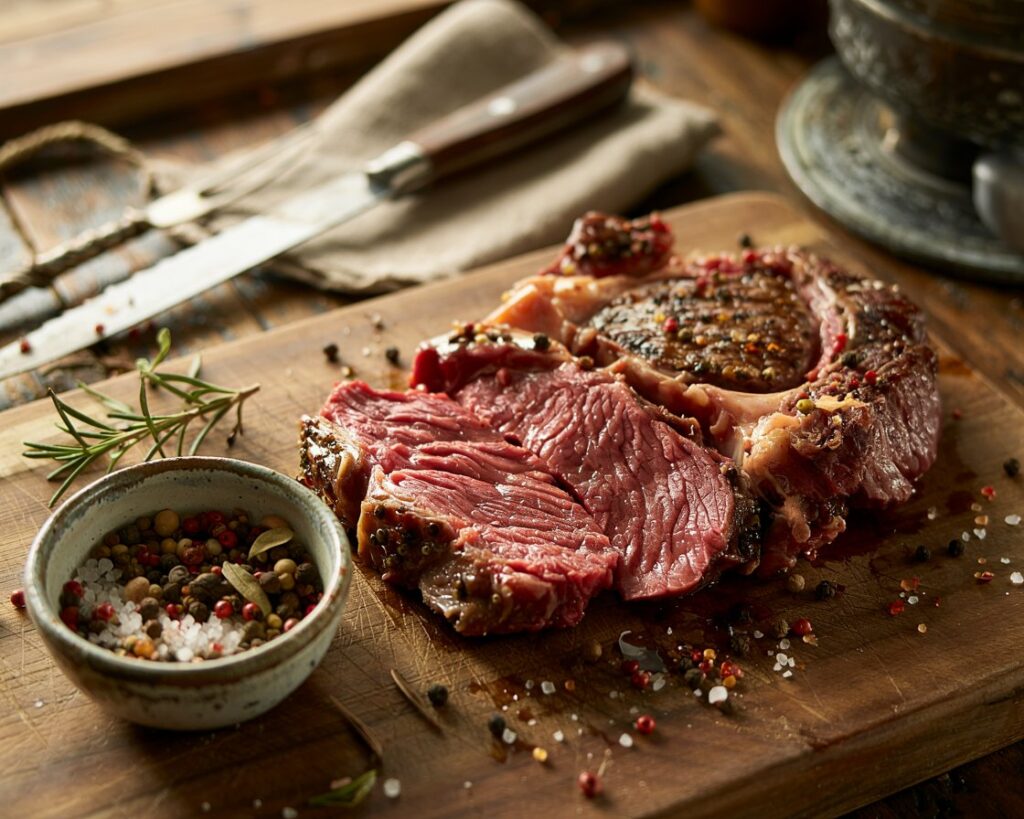
Steak seasoning doesn’t have to be reserved only for steaks. Its rich, bold flavors are incredibly versatile and can be used in a variety of dishes to elevate the flavor of other foods. Ready to get creative? Here are some unexpected ways to use your steak seasoning beyond the grill.
Sprinkle on Roasted Veggies or Potatoes
Don’t let your veggies or potatoes be bland! Your steak seasoning can add depth and richness to roasted vegetables or crispy potatoes. Toss your veggies (carrots, zucchini, bell peppers, etc.) with olive oil and a sprinkle of your steak seasoning before roasting. The spices will caramelize and bring out the natural sweetness of the veggies, creating a savory side dish that complements your meal perfectly. The same goes for potatoes—whether you’re making mashed, roasted, or baked, steak seasoning adds that extra pop of flavor.
Mix into Burgers, Meatballs, or Even Mayo
If you’re looking to elevate your burgers or meatballs, steak seasoning is the way to go. Incorporate a tablespoon or two into your ground beef or turkey before shaping them into patties or meatballs. It adds a bold, savory punch that’s sure to impress.
For an even more surprising twist, mix a bit of your steak seasoning into mayo to create a spicy, flavorful aioli. Perfect for slathering on sandwiches, burgers, or dipping fries. The possibilities are endless, and your steak seasoning will transform even the simplest dishes into something special.
Bottle It as a Gift (Yes, Really)
Looking for a fun, personalized gift idea? Why not bottle your homemade steak seasoning and share it with friends or family? You can create a beautiful spice jar gift set for birthdays, holidays, or BBQ parties. Simply fill a cute jar with your seasoning mix, add a custom label with a quirky message (like “Steak Lover’s Secret Weapon”), and voilà! You’ve got a gift that’s both thoughtful and delicious.
📦 Fun Visual Idea: DIY gift label templates or a Pinterest-style grid of spice jar inspiration. Create a set of labels with fun designs or holiday themes to personalize the gift.
These creative ideas are a fun way to use your steak seasoning in ways you might not have considered. Whether you’re adding depth to side dishes, transforming everyday meals, or giving a unique gift, your homemade steak seasoning is as versatile as it is flavorful.

Why Homemade Steak Seasoning is a Game-Changer for Every Home Cook
In conclusion, homemade steak seasoning offers unparalleled flavor and versatility, giving you complete control over your seasoning and creating the perfect balance every time. Whether you’re grilling a juicy ribeye, making burgers, or even gifting a jar of your custom blend, this seasoning will elevate your meals like never before.
For even more ways to enhance your cooking, why not pair your steak with a side of Garlic Herb Butter Roasted Potatoes from Feast Recipe? The savory, buttery flavor complements the bold seasoning on your steak perfectly!
So go ahead, ditch the store-bought blends, and get creative in the kitchen with your homemade steak seasoning. Your taste buds will thank you!


